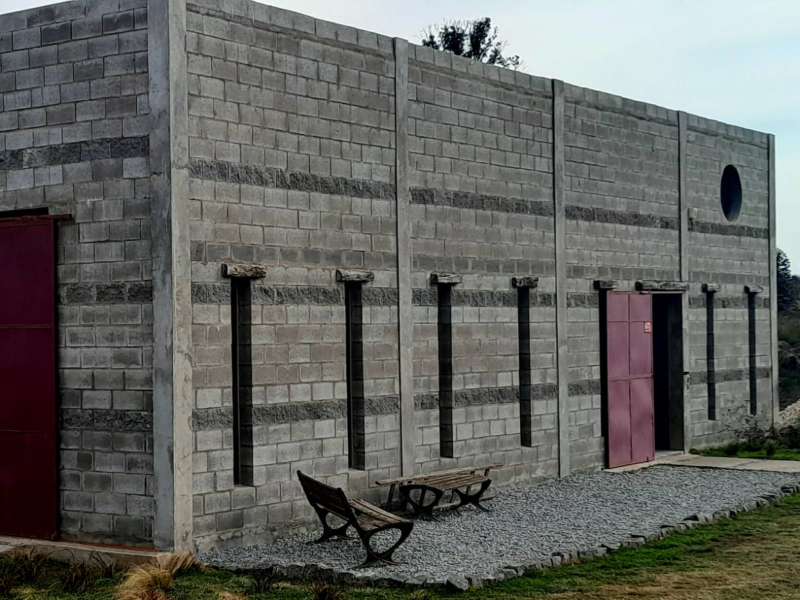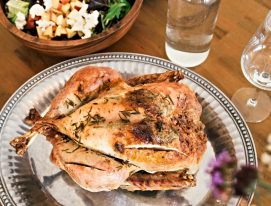Located to the southeast of the Province of Buenos Aires, the town of Tandil is located in a fertile valley surrounded by the sierras of the Tandilia system. This is where experts from the public research bodies INTA and INTI and the Cordón Blanco vineyard team carried out several studies and eventually determined that the area’s characteristics justified the creation of a Geographic Indication (GI). The distinction, which follows political boundaries, is based on the unique geological origins of the area and soil compositions that differ from the traditional wine regions of Argentina.
The Tandil GI: an official recognition of the distinctiveness and quality

The Association of Viticultural Producers of Tandil (APVT), which was founded in 2022, lobbied for the formation of this new GI and its members currently number 15 producers. “The new Tandil GI represents official recognition of the distinctiveness and quality of our region. It offers a unique opportunity to position our products in the national and international markets, giving us our own identity, and providing a guarantee to consumers of the unique authenticity and qualities of our wines,” says Esteban Sarabia, the joint owner with his wife of the San Eusebio vineyard and co-founder of the APVT, with pride.
However, it was no easy task to establish the GI. It required a year of hard work, studies and analysis. “The first step was to form a joint working team including specialists in climate, edaphology and geology from CONICET, INTA and INTI. Once we were sure that we knew where we were going, we sat down to gather and compile the crucial information so as to provide a basis for establishing the character of local wines,” says Matías Lucas, one of the partners in Bodega Cordón Blanco along with his siblings.
The region also boasts the Denomination of Origin (DOT) of Salame from Tandil and a GI for Banquete cheese from Tandil, which provide the framework for “the complete traceability of processes that position the products as distinct, with the added tangible value of the Tandil brand which is already well-known for products such as cheeses and salamis,” says the agricultural engineer Alejandro Bonadeo, a founding partner of the vineyard and winery Finca 74.
In the Sierras of Tandil, one finds ravines and caverns made up of quartzite and sandstone. This environment imbues the wines of the region with distinctive qualities. “The freshness from the natural acidity and herbal aromas are part of the identity of a place where native flora flourishes, making for wines that tend more toward aromatic mellowness than potency and more freshness than structure. At Cordón Blanco we have two quite well-defined profiles: one is calcareous, lending the wines greater energy and the other granite, resulting in wines with more mineral profiles,” says Lucas.
Provence and the south of France

Mónica Elizabeth Olave, the co-owner along with Francisco Olares at Don Francisco, adds, “Here we have a notable thermal range and soils are quite similar, at least in our area, to Provence in France.” Similarly, Gerónimo Agustín Antonetti, an agricultural engineer and oenological advisor to Estancia La Manga, says, “Our region has similarities to areas such as Canelones in Uruguay or the south of France.” Oscar Barbini, the founder of Calaguala, adds, “Tandil has a very propitious climate for quality wine production, with plenty of personality; elegant but welcoming. In our case, we’re at the top of a hill, I think it’s probably one of the highest vineyards in the province. The air here is very pure and the native plants give off a special, unique aroma while they grow among the vines.”
The varieties planted across the region include Cabernet Franc, Carmenere, Syrah, Sauvignon Blanc and Merlot. Many areas are ideally suited to each. “In Tandil, there are notable areas close to the sierras and foothills such as the vineyards in La Elena and Don Bosco. These areas benefit from the altitude, good drainage and solar exposure, which favor the production of high quality grapes with an excellent concentration of flavors. In addition, the plains area, which spans places such as De La Canal and Gardey, has richer, damper soils which helps to contribute to the diversity and quality of wines made in the region,” says Sarabia.
From a hobby to a commercial opportunity

Many producers began their viticultural projects as a hobby but today they see a commercial opportunity. This is true of Adriana Bernaola, the owner of the Don Gregorio vineyard, who says: “Our project began six years ago planting half a hectare with around 1500 Cabernet Sauvignon and Sauvignon Blanc vines. We didn’t know the crop very well and given that we had office jobs, it was difficult to learn. We lost a lot of vines but went on in the belief that the area could produce good fruit. Today, now that we’ve had professional advice, we’re on the right track.”
Tandil isn’t immune from some of the usual problems of the sector. “The drawbacks of producing here are late frosts,” says Olave, while Lucas adds, “As a challenge there’s promoting the area and associating it with quality.”
But there are opportunities in that regard too. “We see an unsatisfied demand for more activities linked to oenotourism in which events are organized related to the production process, gastronomy and the sale of regional products,” says Bonadeo. Looking to the future, Lucas says, “A lovely project would be to begin to generate sharply differentiated micro-zones, as there is a lot of variation in Tandil.” Sarabia, meanwhile, concludes, “I see a promising future for the viticultural region of Tandil. With the recognition that comes with a GI, we have a solid foundation on which to continue improving and expanding our output.”



